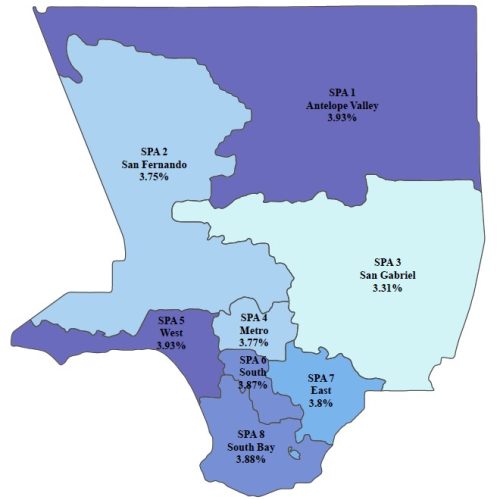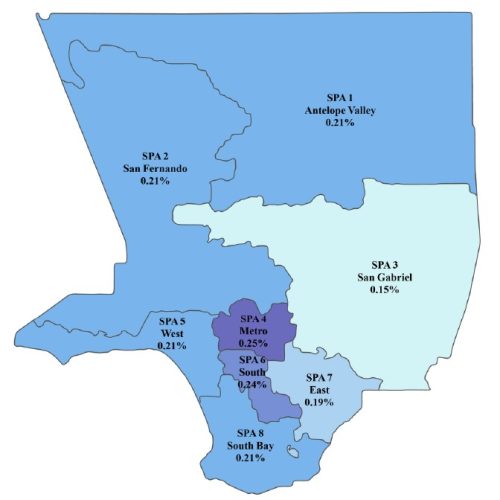Prevalence
Opioids are a class of drugs that derive from or mimic the natural substances found in the opium poppy plant, and include the illegal drug heroin, synthetic opioids such as fentanyl, and pain relievers available legally by prescription such as oxycodone (OxyContin), hydrocodone (Vicodin), codeine, morphine, and many others.
Opioids are often used as a form of medication to relax and relieve the body of moderate to severe pain. Due to its relaxing and euphoric effects, many may misuse opioids for non-medical reasons. This can be dangerous because opioids can be highly addictive, and overdoses and death are common.
Prescription Drug Misuse
Misuse of prescription drugs is second only to marijuana as the most prevalent drug problem in the United States (US). Among individuals who started using illicit drugs in the past year, 1 in 5 reported that their first drug was prescription opioids (NSDUH 2013).
In the US, 8.7 million (3.1% of individuals aged 12+ in the US, and 12.2% of individuals aged 12+ who used any prescription pain relievers in the past year) used prescription pain relievers non-medically or “misused” (use in any way not directed by a doctor, including use without their own prescription; use in greater amounts, more often, or longer than prescribed; or use in any other way not directed by a doctor) in the past year in 2021 (NSDUH 2021).
(Note: Prescription pain relievers include products containing hydrocodone, oxycodone, tramadol, codeine, morphine, prescription fentanyl, buprenorphine, oxymorphone, hydromorphone, Demerol, methadone, or other prescription medication for pain relief.)
In the US, past year misuse of prescription pain relievers was most common among individuals aged 18-25 years from 2015 to 2020. In 2021, misuse was highest among adults aged 26 or older (Figure 1).
Among past year users of prescription pain relievers, misuse was most common among individuals aged 18-25 years (Figure 2).
In Los Angeles County (LAC), 3.7% of individuals aged 12 or older had misused prescription pain relievers in the past year in 2016-2018. The prevalence of prescription pain reliever misuse was highest among young adults aged 18-25 years (Figure 3).
In LAC, the SPA1-Antelope Valley and SPA5-West regions (3.93%) had the highest prevalence rates of prescription pain reliever misuse among individuals aged 12 years or older, followed by the SPA8-South Bay (3.88%) and SPA6-South (3.87%) regions (Figure 4).
Figure 4. Prevalence of prescription pain reliever misuse in the past year (age 12+), LAC, 2016-2018
Source: NSDUH

Gone to Work/School Under the Influence of Prescription Medications
Among those who have ever misused prescription medications in LAC in 2017, over one-third (36.1%) had misused prescription medications (including pain relievers, sedatives/benzodiazepines and/or stimulants) before or during work/school (Figure 5). (Note: Adults were asked if they had gone to work, and youth were asked if they had gone to school under the influence of prescription medication.)
Among those who have ever misused prescription medications, 39.7% of males and 31.1% of females misused prescriptions medications before or during work/school (Figure 6).
Among those who have ever misused prescription medications, the prevalence of ever going to work/school under the influence was highest for youth aged 12-17 years (55.3%) compared to other age groups (Figure 7).
Among those who ever misused prescription medications, Whites (42.4%) were most likely to have gone work/school under the influence, followed by multi-race/ethnicity (39.2%), Blacks (39.0%), and Latinx (36.5%) (Figure 8).
Heroin Use
Many who become addicted to prescription opioids turn to heroin as a cheaper, more widely available alternative. However, as supply-side interventions such as improved clinical prescribing guidelines decreased prescription opioid accessibility in recent years, the use of heroin as an initiating opioid has grown significantly from about 8.7% of individuals entering opioid use disorder treatment reporting heroin as the first opioid type they misused in 2005, to 33.3% in 2015 (Cicero et al. 2017).
In the US, an estimated 1.1 million people aged 12 years or older (0.4%) misused heroin in the past year, and 26,000 people began using heroin for the first time in the past year (NSDUH 2021).
In the US, past year heroin use has been declining among young adults aged 18-25 years since 2016, and has been gradually increasing among adults aged 26 years and older (Figure 9).
In 2016-2018, past year use of heroin in LAC was highest among those aged 26 years and older (0.22%), followed by those age 18-25 years (0.2%) (Figure 10).
In LAC, heroin misuse among individuals age 12 years and older was highest in the SPA4-Metro region (0.25%), followed by the SPA6-South region (0.24%) (Figure 11).
Figure 11. Prevalence of prescription pain reliever misuse in the past year (age 12+), LAC, 2016-2018.
Source: NSDUH

References
Substance Abuse and Mental Health Services Administration. National Survey on Drug Use and Health 2013. Results from the 2013 NSDUH: Summary of National Findings.
Figure 1-2, 9. Substance Abuse and Mental Health Services Administration. National Survey on Drug Use and Health (NSDUH). 2015-2021. Key Substance Use and Mental Health Indicators in the United States: Results from the 2015-2021 National Survey on Drug Use and Health.
Figures 3-4, 10-11. Substance Abuse and Mental Health Services Administration. National Survey on Drug Use and Health (NSDUH). 2016-2018 NSDUH Substate Region Estimates by Age Group.
Figures 5-8. Prescription Medication Misuse and Public Perceptions in Los Angeles County: Findings from the 2017 Community Needs Assessment. Health Outcomes and Data Analytics, Substance Abuse Prevention and Control, Los Angeles County Department of Public Health, March 2019.
Cicero, T. J., Ellis, M. S., & Kasper, Z. A. (2017). Increased use of heroin as an initiating opioid of abuse. Addictive behaviors, 74, 63–66. https://doi.org/10.1016/j.addbeh.2017.05.030


